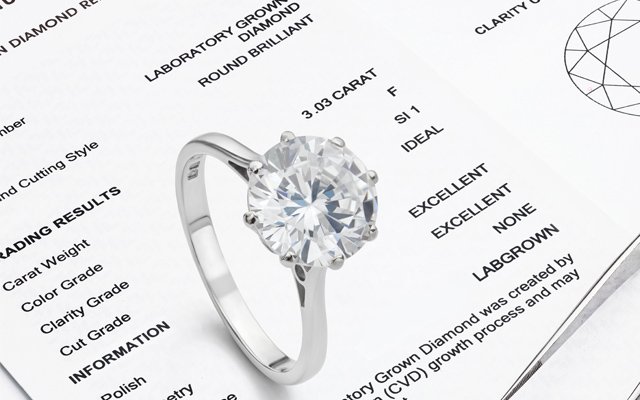
|
Paterson Fine Jewellery |
|---|
 Diamonds have captivated humanity for centuries with their dazzling beauty and enduring allure. However, recent technological advancements have introduced a new player to the scene: lab-grown diamonds. In this article, we will explore the key distinctions between lab-grown and natural diamonds, shedding light on the advantages and unique characteristics of each.
Diamonds have captivated humanity for centuries with their dazzling beauty and enduring allure. However, recent technological advancements have introduced a new player to the scene: lab-grown diamonds. In this article, we will explore the key distinctions between lab-grown and natural diamonds, shedding light on the advantages and unique characteristics of each.
Natural Diamonds: Natural diamonds are formed deep within the Earth's mantle over billions of years under extreme heat and pressure. They are brought to the surface through volcanic eruptions and mining processes. Each natural diamond is a unique product of geological processes.
Lab-Grown Diamonds: Lab-grown diamonds, on the other hand, are created in controlled environments by replicating the conditions that lead to diamond formation. They are synthesized using advanced technology and do not require mining. These diamonds are produced by humans and are sometimes referred to as synthetic or man-made diamonds.
Natural Diamonds: Natural diamonds exhibit a wide range of characteristics, including variations in color, clarity, and size. These imperfections, often referred to as inclusions and blemishes, are a result of their natural formation process. Natural diamonds can be both flawless and highly included.
Lab-Grown Diamonds: Lab-grown diamonds are typically free from the inclusions and impurities found in natural diamonds. They are grown under controlled conditions, allowing for the production of diamonds with exceptional clarity and quality. This consistent quality is a hallmark of lab-grown diamonds.
Natural Diamonds: The diamond industry has faced ethical concerns related to the sourcing of diamonds from conflict zones, often referred to as "blood diamonds." Mining can also have adverse environmental impacts, including habitat destruction and carbon emissions.
Lab-Grown Diamonds: Lab-grown diamonds are considered an ethical choice as they are produced without the ethical concerns associated with traditional diamond mining. They also have a smaller environmental footprint, as the controlled production process is more sustainable and generates fewer carbon emissions.
Natural Diamonds: Natural diamonds are often more expensive due to their rarity and the cost associated with mining and sourcing. The price of a natural diamond can vary significantly based on factors such as size, quality, and color.
Lab-Grown Diamonds: Lab-grown diamonds are generally more affordable than natural diamonds. They typically cost 20-40% less than their natural counterparts of similar quality. This affordability makes lab-grown diamonds an attractive option for budget-conscious consumers.
Natural Diamonds: Natural diamonds are renowned for their exceptional hardness, making them resistant to scratches and ideal for everyday wear. They are celebrated for their timeless beauty and brilliance.
Lab-Grown Diamonds: Lab-grown diamonds possess the same durability and beauty as natural diamonds. They can be cut and polished to achieve the same sparkle and brilliance, making them visually indistinguishable from natural diamonds.
In conclusion, both lab-grown and natural diamonds have their unique characteristics and advantages. The choice between them often comes down to personal preferences, ethical considerations, and budget. As technology continues to advance, lab-grown diamonds are gaining popularity as a sustainable and accessible alternative to natural diamonds, offering consumers a wider range of choices in the world of fine jewelry.